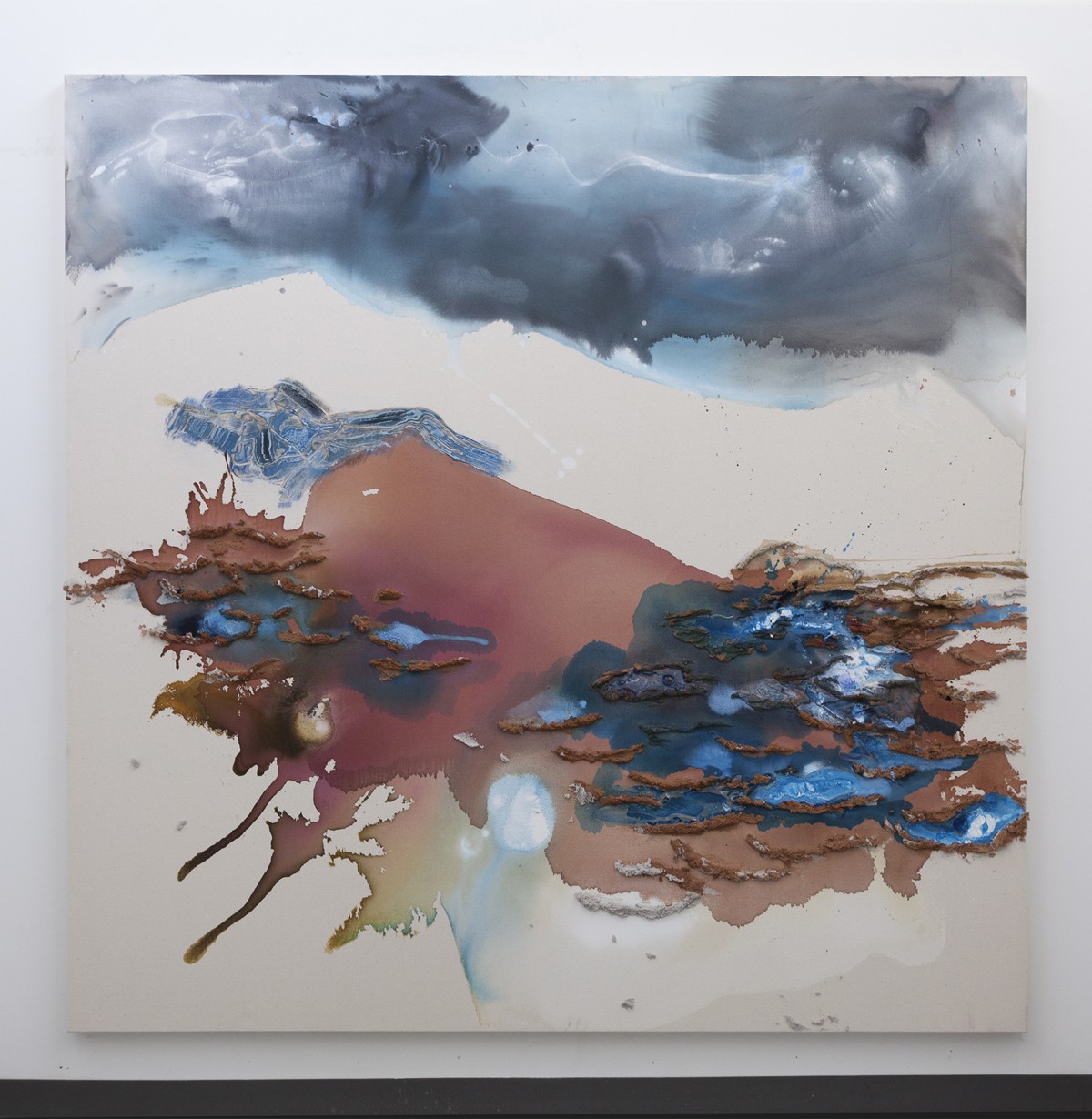
The process of understanding abstract art is like learning how to swim by being thrown into the deep end. The experience forces a way of thinking and seeing that isn’t natural for most people. The recognition and acceptance of absence, lack of linearity, and the stripping down of the everyday to its poetic bare bones is something acquired through time and patience.
For decades, abstract art has been a conventionally male stronghold in art, leaving female artists standing at the edge of the pool. Even the best-known women involved in the movement—Helen Frankenthaler, Elaine de Kooning and Lee Krasner—toiled in relative obscurity, as they signed their paintings with initials so no one would know they were female or promoted and babysat their more famous, alcoholic spouses.
The focus on and reconsideration of women artists has been at its zenith the past couple of years in Orange County, with many recent shows attempting to reconcile the side-lining and reinstate women on the timeline of the great artists. Look no further than the Great Park Gallery’s exciting “Painting in the Abstract: Women Inspired by the Masters,” curated by saltfineart director Suzanne Walsh and the Great Park Gallery staff. Featuring six local painters who offer no overt narratives or obvious imagery (save one or two), the show asks us to use the deepest parts of our brains to try to connect with the clues they’ve given us. If you’re unused to abstract art, expect to be confused or befuddled by what you’re seeing, but realize it’s okay for you to muddle through it and walk away with your own ideas. No hands are being held here, so dive in, and learn how to swim.
Fatemeh Burnes’ 2013 Transluminants owes more to photography than painting, with its grid of nine inkjet prints, hundreds of layers of resin applied, blurring the opaque elemental visuals. Viewing them is akin to the experience of losing one’s glasses and having to squint to make out what’s directly in front of you. Suki Berg’s paintings are the most “realistic” of the bunch, but any overt beach or fish in the smears of blues, greens and purples that make up the lovely Fish Beach seem accidental. While the few straight lines may suggest horizon, maybe a lake or a tree, and there’s some green where the pattern-seeking mind would think grass should be, the only clue that the title might be more than a diversion is the tranquility you feel looking at it, something close to the experience of watching koi swimming in a Japanese garden.
Amy MacKay’s oils on canvas remind me of Mary Abbott’s distilled paintings of the “poetry of living space”: a few brushstrokes of green imply the inside of a car, the world outside blowing past the passenger window in a hazy yellow smear (Double Curtain, 2017). In Johanna and Johanna II, two somber paintings of the same subject, I think I can make out a chair, maybe light streaming through a window; whatever they may be, both pictures have a resolute funereal gravity to them. Meanwhile, Andrea Welton’s mixed-media paintings are drawn from excursions into nature, the paint swirling and battering the large canvases like satellite pictures of Hurricane Irma. There are tempest clouds of gray and blue and white, large expanses of brown with sponge-like material appearing to be vast swatches of mountainous terrain on topical maps. They beg to be touched by curious hands.
Coastline Community College professor Jane Bauman is a painter with no set style that I’m able to observe, always mixing things up to head in the opposite direction of the work she’s done previously. Ophelia is a Pop Art/mixed-media piece, a smooth, gray, depressed Swiss cheese of tiny holes laid over a blanket of flowers, the floral images shining through, as a sharp pink lightning bolt bisects the canvas. Honoring both the titular heroine’s melancholy songs about wildflowers and her eventual “crack-up” in Shakespeare’s tragedy, Bauman’s second piece, Submerged, continues with the theme of being emotionally underwater, the pixilated flora this time under a blue, spotted layer of paint.
The curator notes specify that Maggie Lowe Tennesen’s style has been influenced by Bridget Riley, a Hard Edge painter during the ’50s and ’60s. Tennesen’s long stripes of rigidly applied acrylic, flamboyantly teeming with complementary colors, traps the dynamic tension within each canvas, putting her obsessive geometric patterns in a tight stranglehold. The pictures seem to pulse and vibrate as you get close.
While each artist gets a welcomed bio and discussion of her technique and process, we’re only given a single reference to past female masters as a specific influence on any of the artists. That leaves the other five out of the timeline we need to track the past to their present. While no doubt the women in the exhibition have jumped into the pool on their own, without waiting to be thrown in, some of the Masters are still waiting at the side, hoping for us to acknowledge them, too.
“Painting in the Abstract: Women Inspired by the Masters” at Great Park Gallery, 6950 Marine Way, Irvine, (949) 724-6880; www.ocgp.org. Open Thurs.-Fri., noon-4 p.m.; Sat.-Sun., 10 a.m.-4 p.m. Through Nov. 12. Free.
Dave Barton has written for the OC Weekly for over twenty years, the last eight as their lead art critic. He has interviewed artists from punk rock photographer Edward Colver to monologist Mike Daisey, playwright Joe Penhall to culture jammer Ron English.

